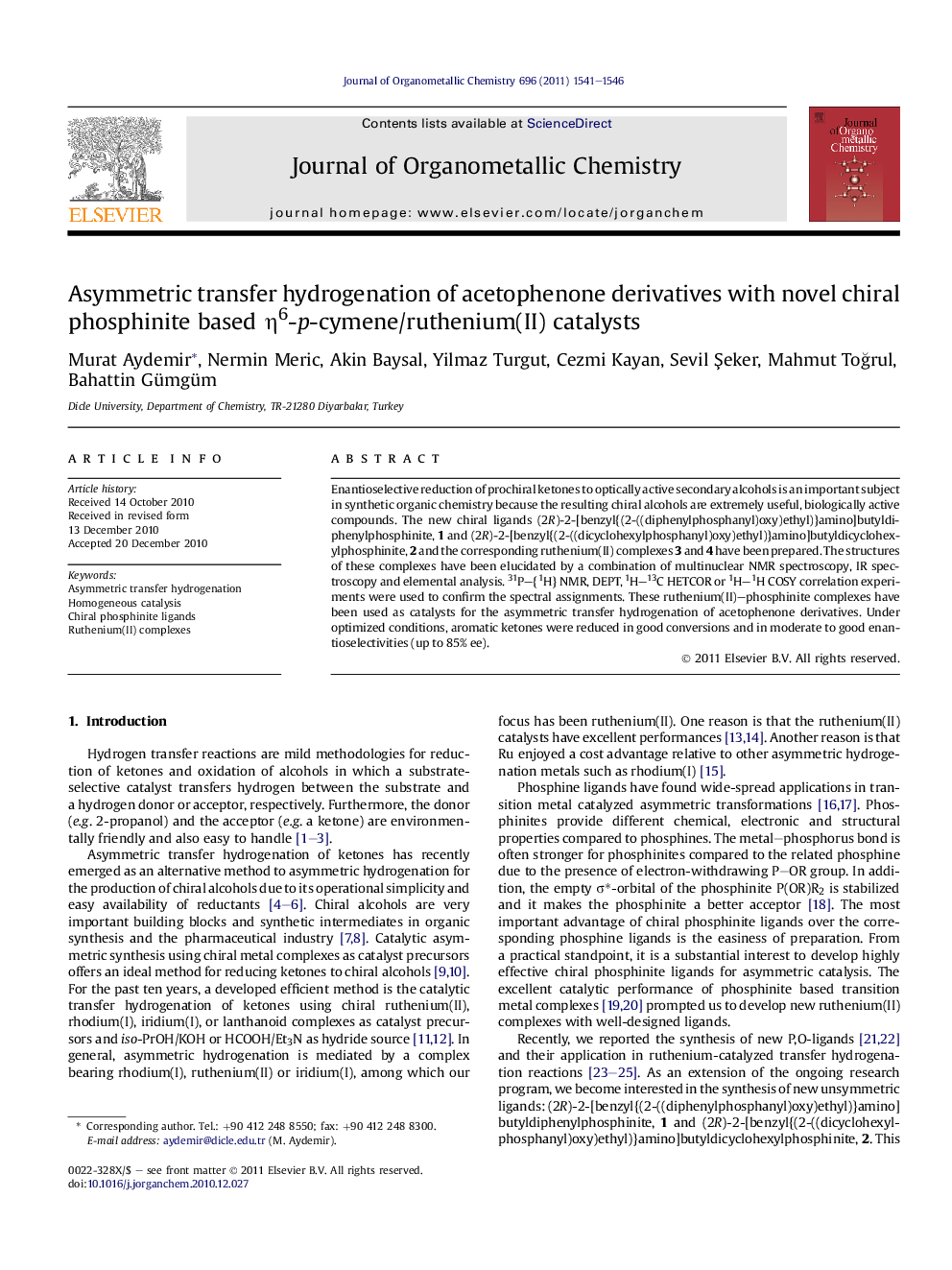| Article ID | Journal | Published Year | Pages | File Type |
|---|---|---|---|---|
| 1322338 | Journal of Organometallic Chemistry | 2011 | 6 Pages |
Enantioselective reduction of prochiral ketones to optically active secondary alcohols is an important subject in synthetic organic chemistry because the resulting chiral alcohols are extremely useful, biologically active compounds. The new chiral ligands (2R)-2-[benzyl{(2-((diphenylphosphanyl)oxy)ethyl)}amino]butyldiphenylphosphinite, 1 and (2R)-2-[benzyl{(2-((dicyclohexylphosphanyl)oxy)ethyl)}amino]butyldicyclohexylphosphinite, 2 and the corresponding ruthenium(II) complexes 3 and 4 have been prepared. The structures of these complexes have been elucidated by a combination of multinuclear NMR spectroscopy, IR spectroscopy and elemental analysis. 31P–{1H} NMR, DEPT, 1H–13C HETCOR or 1H–1H COSY correlation experiments were used to confirm the spectral assignments. These ruthenium(II)–phosphinite complexes have been used as catalysts for the asymmetric transfer hydrogenation of acetophenone derivatives. Under optimized conditions, aromatic ketones were reduced in good conversions and in moderate to good enantioselectivities (up to 85% ee).
Graphical abstractThe new chiral neutral unsymmetric phosphinite ligands (2R)-2-[benzyl{(2-((diphenylphosphanyl)oxy)ethyl)}amino]butyldiphenylphosphinite, 1 and (2R)-2-[benzyl{(2-((dicyclohexylphosphanyl)oxy)ethyl)}amino]butyldicyclohexylphosphinite, 2 and the corresponding ruthenium complexes 3 and 4 were synthesized and characterized. Under optimized conditions, these chiral ruthenium complexes serve as catalysts precursors for the asymmetric transfer hydrogenation of acetophenone derivatives in iso-PrOH and act excellent catalysts, giving the corresponding optical alcohols in 99% yield and up to 87% ee.Figure optionsDownload full-size imageDownload as PowerPoint slideHighlights► Two novel chiral phosphinite ligands were synthesized. ► Bridged dinuclear ruthenium complexes were prepared and characterized. ► Ru(II) complexes serve as catalysts for the asymmetric transfer hydrogenation of ketones.
